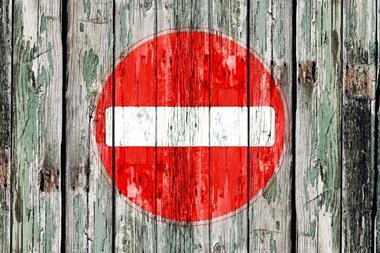As insurers face up to growing competition and more demanding customers, the importance of the brand has never been greater. Many insurers are spending millions of pounds on marketing activity, much of which is becoming more targeted and creative.
Success, and increasingly survival, depends on the ability to communicate key brand messages such as trustworthiness, security, customer service and value for money. An IBM/EIU study in 1997 highlighted that 28% of insurance executives believe customers value brand equity as an important attribute and that by 2002, this will rise to 45%.
Damaging sites
With this in mind, it is difficult to understand why there are insurance web-sites which are so poor and ultimately damaging to the brands they represent.
In fairness to insurance companies, this is a problem that applies to all sectors. Fletcher research indicates that 30% of UK company web-sites are little more than glorified annual reports.
There is no doubt that the internet offers insurers a number of opportunities. Research indicates that more and more insurers are planning to sell their products through this distribution channel or to offer services in this way. For example, the IBM/EIU study revealed that 43% of insurers plan to allow customers to submit claims or query their status electronically by 2002. The internet can deliver great efficiency and by operating 24 hours a day, 365 days a year, it is invaluable in the industry's crusade to improve customer service.
However, if the web-site is poorly designed, difficult to use and limited in the services provided, an insurer's e-business activity can be extremely damaging to its brand.
However, used in an innovative way, the internet can play a powerful role in developing the brand. For insurers to make the most of the internet, they must ensure that their brands stand out in cyberspace – not just that their sites are well-built, easy to use and relevant.
Also, insurers must ensure that all their distribution channels offer the same standard of high service. For a customer or prospect, a web-site that crashes constantly is the equivalent of a call centre hanging-up on them or being unable to get through on the phone. The inability to download information can be likened to someone holding on a call. Experience shows that if customers don't have a consistent and good experience on the web, they will go elsewhere.
Unfortunately, there are too many companies in all sectors who feel that they must have a presence on the internet, and they develop their sites as quickly as possible without giving enough consideration to what they want to achieve. What services do they want to offer or which products do they wish to sell though this channel? Which of their target audiences do they want to use the service and will they tailor it for particular groups?
Key brand criteria
Working with brand consultants Interbrand, IBM recently developed a methodology for determining what constitutes a strong e-brand. It scores web-sites against six key brand experience criteria: accessibility, navigability, customer service, content, technical performance and visual expression. Insurers should ensure that their web-sites perform sufficiently in these areas.
The methodology, which last year was applied to banks with an on-line presence, will be used to determine which insurers have the strongest e-brands. As a rule, companies in America and Scandinavia have more developed internet offerings so it is possible that the sector leaders will come from here. Indeed, in last year's study of banks, six out of the top ten were American or Scandinavian. The only UK bank to make this elite group was Egg.
In developing strong e-brands, insurers should not only look to the work of their peers, but also leading e-brands outside of their sector. They should benchmark their web-sites against companies like Amazon and Schwab, that are particularly strong in this area.
Insurers, as a whole, have a great deal of work to do in order to improve upon their images. If they are going to achieve this, they must ensure that they consistently communicate a strong brand through all channels. For many, one of the biggest obstacles to achieving this is their current presence on the internet. Tackling this problem should be at the top of their agendas.
Hosted by comedian and actor Tom Allen, 34 Gold, 23 Silver and 22 Bronze awards were handed out across an amazing 34 categories recognising brilliance and innovation right across the breadth of UK general insurance.












































